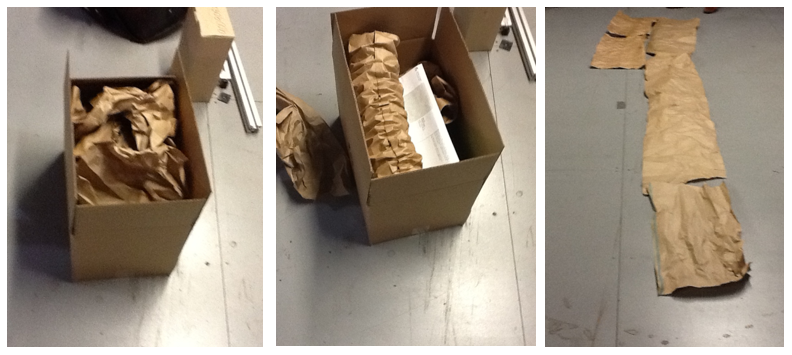How well are your products protected inside the box?
Paper void fill: one of the most effective ways to protect your products during shipping. But how do you know what kind of void fill is the right kind? Do you go with a price point or a style? Do you look at what customers really want in their packaging? How exactly should you be choosing your paper void fill?
Honestly, price should probably be the least of your concerns: when it comes to the total cost of packaging only about 25% of that is material cost. The remaining 75% includes packing, inter-logistics, investment, disposal, and complaints/returns. So, when you're looking for a product, the best product is what's going to work best within your current process and what's going to be best for customer satisfaction.
When it comes to void fill, paper offers some very unique characteristics: it can be made of 100% recycled content, ipapert can be custom printed with your logo, and it's easy to dispose of.
 Traditional style paper void fill contains much more paper, thus adding weight and labor costs, than the new Chevron tubes.
Traditional style paper void fill contains much more paper, thus adding weight and labor costs, than the new Chevron tubes.But there are different choices, even within paper void fill.
Chevron style
One example is the chevron style. This tubelike paper void fill offers a really professional looking filling and is easy to remove and dispose of. It's also made of considerably less paper than traditional kraft paper void fill.
By switching to the chevron tube, customers see an average 25% productivity increase and a 5% weight decrease in their packaging.
The [...] Chevron tubes not only perform well in the box in regards to protecting the product, but can also help improve the overall presentation to the end user, providing a neater pack than [the traditional] material.
Customers are able to:
- decrease damage rates
- improve the "unboxing experience"
- increase throughput
- improve ergonomics
- decrease total packaging costs
Another style of paper void fill is the papillon style, which feature a butterfly-style fan fold. The machines are very fast and lightweight, and the system is highly ergonomic for your packers, compared to traditional paper void fill.
The unique shape of the pad is patented. The pads are lightweight and offer good spring effect. They can either be used for filling voids or for wrapping shipping goods. They adjust quickly to the products in the package, therefore ensuring reliable protection of the goods. Moreover, the pads offer a pleasant unboxing experience to the end-customer.
Target groups include the e-commerce, cosmetic and pharmaceutical markets, along with companies that send lightweight small and medium-sized packages.
When it comes to void fill, should you go with paper or plastic?
Truthfully, the answer is: it depends. It depends on your goals, your needs, your facility, and your customers. But what you should do is go with a vendor who can offer you both and who has the experience and commitment to explain both's positives and negatives.


